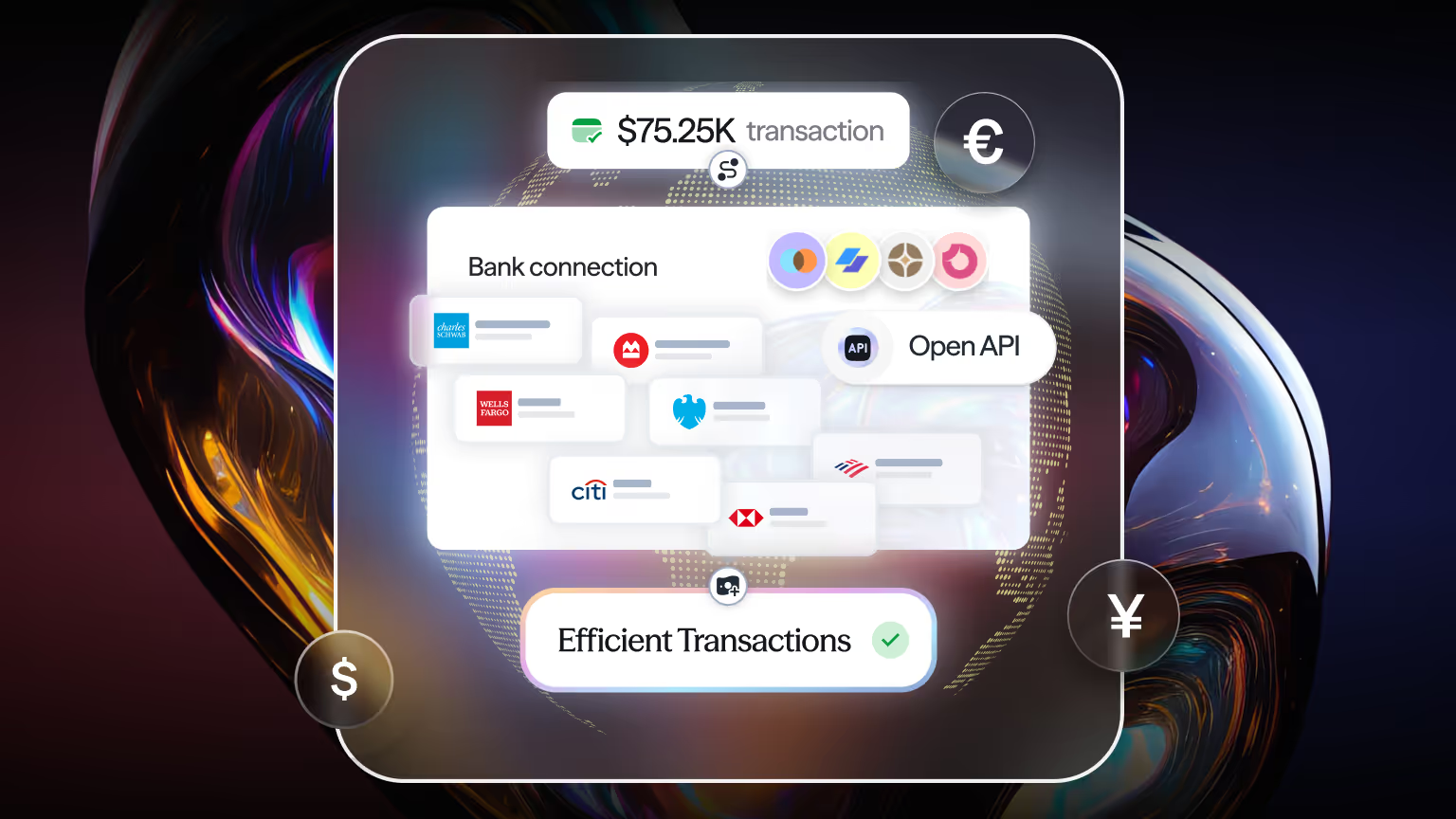Cross-Border Payments: How Open Banking Improves Acceptance
Open banking boosts cross-border payments while reducing costs and friction for global merchants.

Expanding internationally has never been more achievable, but accepting payments across borders remains one of the biggest challenges for global merchants. Why? Because traditional cross-border payment methods are riddled with friction: inconsistent authorisation rates, high interchange fees, currency mismatches and a lack of local trust.
While many businesses rely on global card networks or international PSPs to facilitate transactions, the reality is stark, as cross-border card payments are far more likely to be declined, especially when issuers are unfamiliar with the merchant or the market. These failures not only hurt conversion but also damage brand trust.
So what’s the alternative?
Open banking, the regulated framework allowing consumers to initiate payments directly from their bank accounts, is fast emerging as a smarter, more localised method to improve acceptance and reduce costs. In this article, we explore how open banking can solve key challenges in cross-border payments and why it might be the most strategic upgrade global merchants make in the next 12 months.
What is Open Banking and How Can it Transform Cross-Border Payments?
At its core, open banking enables consumers and businesses to securely share their banking data and initiate payments directly from their bank accounts via APIs, without using cards or third-party platforms. Enabled by regulations like PSD2 in the EU and the Open Banking Initiative in the UK, it has transformed how financial institutions expose access to accounts, balances and payment initiation capabilities.
But beyond the technical framework, open banking is changing the way people pay, especially in a cross-border context.
Instead of routing international payments through global card schemes, which often carry high fees, slow settlement and frequent declines, open banking enables direct account-to-account (A2A) payments, securely authenticated by the customer’s bank. These flows are built on secure APIs, not legacy systems.
Prior to open banking, 100% of aggregation tools relied on risky screen scraping. Today, APIs are quickly replacing that with direct, credential-free access, according to Investopedia. This shift has significantly improved the security and reliability of financial data sharing, laying the groundwork for faster and more trustworthy cross-border payments.
For businesses accepting payments from international customers, this means three things:
- Lower decline rates, because banks recognise and verify the customer directly.
- Faster settlement, often in real time or within hours, rather than days.
- Lower processing costs, as transactions bypass the traditional card networks and their associated fees.
In essence, open banking shifts payment control closer to the source by delivering greater visibility, stronger authentication and better conversion for merchants.
Key Barriers in Cross-Border Payments Today
Expanding globally introduces a range of challenges in how payments are processed. Cross-border transactions often face higher failure rates, slower settlement times and added complexity compared to domestic payments. Declines are more likely when issuers don't recognise the merchant or market and currency conversions can lead to hidden costs and reduced clarity. Limited access to local acquiring and regulatory differences further complicate operations. These issues make it harder to deliver a smooth customer experience, something open banking is well-positioned to improve by offering a more direct, trusted and efficient alternative.
Open Banking’s Direct Impact on Acceptance Rates
Open banking addresses one of the most persistent problems in cross-border commerce: transaction failure. Unlike card payments, which depend on intermediaries and risk false declines due to fraud rules or issuer limitations, open banking payments are authorised directly by the customer through their bank.
This has a measurable effect on success rates. Because the transaction is bank-initiated and strongly authenticated, there is less ambiguity in risk assessment, meaning fewer false positives. The payer's bank knows the customer and the payment isn’t routed through multiple acquirers, so there's no confusion over merchant legitimacy or region.
In markets where open banking is mature, the results are already visible. A 2023 study by the European Payments Council found that SEPA Instant Credit Transfers (SCT Inst), a common open banking rail in the EU, achieved a 99.6% success rate across member banks.
These improvements matter most when operating across borders. Traditional card payments fail more often when:
- The merchant is registered in a different country
- The transaction involves an unfamiliar currency
- The issuer has outdated fraud rules or 3DS challenges
Open banking sidesteps this. Instead of relying on multiple third parties, it connects the consumer’s bank and the merchant through a direct API channel, resulting in faster, more reliable authorisations and a better experience for the end user.
Integration Mechanisms and Technical Considerations
Integrating open banking requires leveraging APIs that enable payment initiation and consent management. Most Payment Service Providers (PSPs) offer software development kits (SDKs) or hosted payment forms that streamline customer experience by embedding authentication routines within the merchant’s checkout flow.
Strong Customer Authentication (SCA) is enforced by design in open banking, meaning customers authenticate securely via their banking app or biometric login, eliminating additional 3D Secure prompts or browser redirects. Tokenisation ensures that bank credentials are never exposed or stored on the merchant side, enabling compliant and repeatable payment interactions.
Regional frameworks vary, such as PSD2 in the EU, Open Banking Initiative in the UK, or Australia’s Consumer Data Right, but they all converge around secure, consent-based payment initiation. This shared regulatory backbone simplifies cross-border expansion for merchants able to tap into open banking rails in multiple geographies.
Real-World Use Cases in Open Banking Payments
Travel platforms and airlines serving European customers commonly offer a “Pay with Bank” option, allowing local travellers to pay via their bank instead of entering card details. This boosts authorisation rates and reduces chargebacks and the same model is increasingly available via open banking rails across ASEAN and LATAM.
SaaS providers operating internationally use open banking for subscription billing. Because payments can be initiated with tokenised bank credentials and updated consent, renewal success rates improve and transaction costs drop compared to recurring card billing. Merchant platforms embed open banking flows into a global paywall without regional splits or gateway fragmentation.
In Southeast Asia, platforms targeting Indonesian customers can offer transfers via local open banking rails while also supporting Filipino consumers via local APMs or open banking options. This hybrid approach ensures broad acceptance across multiple markets through consistent API integration.
Why Open Banking and PSPs Matter Together
Cross-border trust and friction reduction increasingly rely on variety in payment options. Open banking complements existing card and wallet rails managed by a robust PSP or orchestration layer. This integrated approach empowers merchants to offer customers multiple payment pathways, automatically selecting the most suitable method based on region, user profile or cost logic.
PSPs with built-in support for open banking reduce developer friction. They shield merchants from having to establish separate bank partnerships, handle consent flows or maintain tokenisation infrastructure. In effect, open banking becomes just another payment method within a payment orchestration layer, enabling global merchants to maintain consistency while scaling into new regions.
Businesses can maintain oversight, compliance and visibility by combining PSP infrastructure with open banking rails. This approach avoids fragmenting checkout into multiple user experiences or payment channels.
Open Banking: The Key to Global Payment Acceptance
Open banking is a powerful tool for improving cross-border payment acceptance, reducing transaction costs and accelerating settlement. For merchants facing card friction, costly FX conversion or regional payment gaps, open banking offers a trusted alternative that aligns with local consumer behaviour and regulatory frameworks.
When coupled with a PSP or payment orchestration platform, open banking provides unified control over routing, reconciliation, fraud and conversion optimisation. Merchants gain the flexibility to serve any market, accept any method and seamlessly manage payment data, all without rebuilding from scratch.
At finera., we bring together open banking payments, card acquiring, APM support and multi-currency routing into one flexible payment ecosystem. If you are looking to simplify global payments while improving performance and acceptance, talk to our team today and discover how finera. helps you scale smarter.
This article on payment methods is for informational and educational purposes only.
- Not Professional Advice: The content provided does not constitute financial, legal, tax, or professional advice. Always consult with a qualified professional before making financial decisions.
- No Liability: The authors, contributors, and the publisher assume no liability for any loss, damage, or consequence whatsoever, whether direct or indirect, resulting from your reliance on or use of the information contained herein.
- Third-Party Risk: The discussion of specific payment services, platforms, or institutions is for illustration only. We do not endorse or guarantee the performance, security, or policies of any third-party service mentioned. Use all third-party services at your own risk.
- No Warranty: We make no warranty regarding the accuracy, completeness, or suitability of the information, which may become outdated over time.
Frequently Asked Questions
Open banking allows businesses to accept direct bank-to-bank payments using secure APIs. In cross-border transactions, this reduces reliance on card networks, improves authorisation rates and lowers fees.
No. Open banking complements existing methods like cards and wallets. It adds flexibility and is especially valuable in regions with strong bank adoption or where card declines are common.
Yes. Open banking uses encrypted APIs and strong customer authentication (SCA), making it more secure than traditional methods like screen scraping or manual bank transfers.
Yes. Open banking is often integrated through a payment orchestration layer, allowing merchants to combine it with PSPs, card acquirers and alternative payment methods (APMs) in one setup.
finera. integrates open banking payments into its orchestration ecosystem, alongside card acquiring, APMs and multi-currency support, helping businesses scale securely and efficiently across borders.

Still Have Questions?
Let’s Find the Right Solution for You
Stay Connected with Us!
Follow us on social media to stay up to date with the latest news, updates, and exclusive insights!









